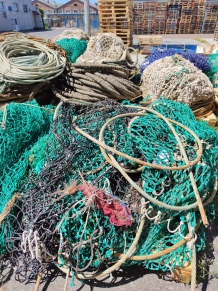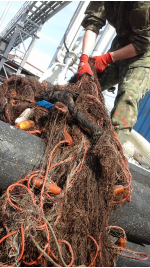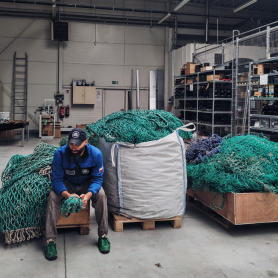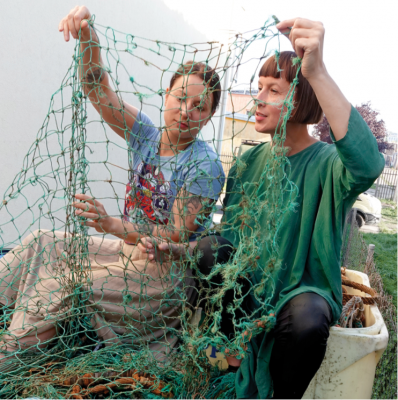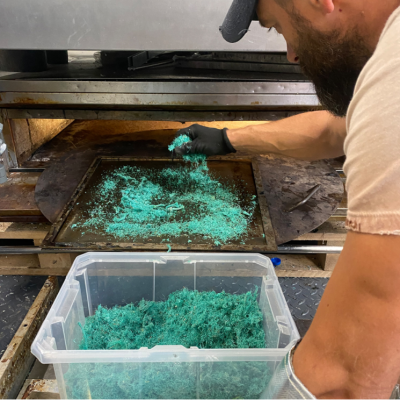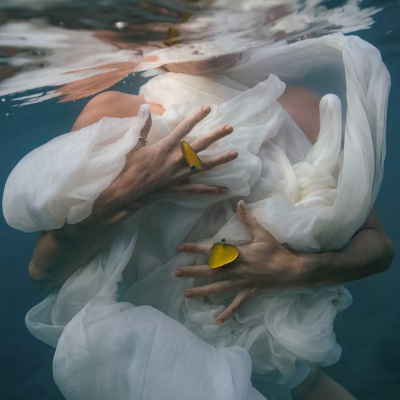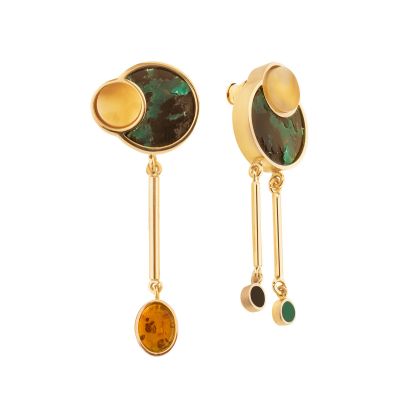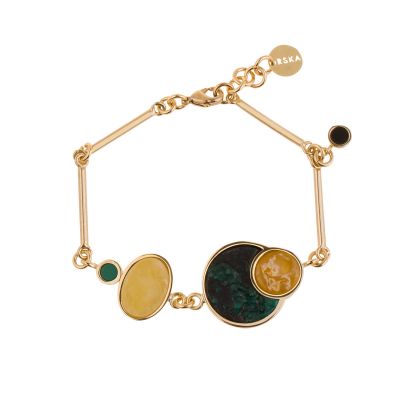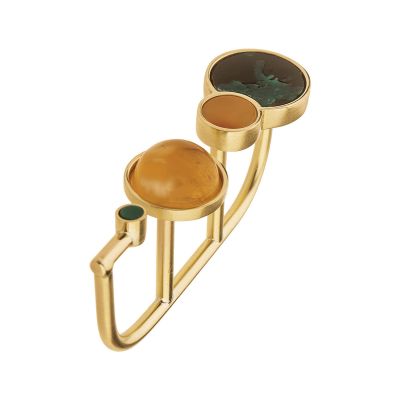ORSKA x BOOMPLASTIC x MARE x KGPR - how was the MARE stone created?
The data provided by the European Commission indicates that derelict fishing gears, called the ghost nets, account for 27% of Baltic litter. The MARE Foundation, in cooperation with the Kołobrzeska Fish Producers Group collects ghost nets from the Baltic to eliminate the risk they pose for the ecosystem. Retrieval of ghost nets from the sea is just the first step. What should happen next? How cant hey be used?
The search for these answers has led us to creating the MARE stone, which, apart from amber is the star of the new collection of jewellery Baltica, designed by Anna Orska.
Ghost nets pose a risk not only for marine living organisms by continuing uncontrolled catches, but can also be considered as marine litter from different kind of plastic material. The scale of the problem in the Baltic is well illustrated by the fact that from 1st June until 31st August 2020, the MARE Foundation, together with the Kołobrzeska Fish Producers Group collected over 3 tonnes of this waste. This is just the tip of the iceberg.
Derelict fishing gears retrieved from the sea are considered in the European legislation as waste. As such they are included in the measures contributing to the transfer to circular economy. The EU objective is to improve the recycling of fishing gears at the end of their life and to promote the circular economy.* According to the principles of circular economy, the materials and resources should remain in the circulation as long as possible, instead of landing in the landfill.
From the beginning of our activities aimed at cleaning the Baltic from derelict fishing gears we looked for the ways for their proper disposal and recycling, in accordance with the EU legislation. We did not want to store them in a port, where they would continue to be considered as a problematic waste. We encountered several problems.
First of all, despite the EU legislation in place, the recycling of retrieved ghost nets still remains a problem. We have not been able to find a company in Poland with adequate technological facilities to recycle the nets. In other countries, such recycling tales place (among others, in the framework of such initiatives as NET-Works, Healthy Seas in cooperation with ECONYL, or Bracenet, consisting of an upcycling of the nets which upgrades waste and uses it for new purposes). However, the existing technology permits to recycle only the nylon nets. Nets made of other type of synthetic material, often covered with organic matter, cannot be recycled.
Hardly anyone wants to deal with the processing of retrieved nets. When the nets reach a recycling company, they must be broken into pieces and sorter. Recycling of different parts requires different technology, because the fishing nets are usually made of a mixture of different synthetic material. They are washed and dried, and then shredded. Only then the shredded material can be used again as raw material. The process is long and time-consuming and requires knowledges and advanced technologies.
After a long search, we manager to find a place, where passion and unconventional thinking meets the technology that can give a second life to the ghost nets.
Our dreams to reuse the ghost nets became real thanks to Adam Krzemiński, the founder of the Boomplastic, who knows everything about plastic. We have already mentioned Boomplastic in connection with another joint project called the Ghostbuster Universal Stool, designed by Studio Rygalik.
The cooperation of ORSKA x BOOMPLASTIC x MARE Foundation x Kołobrzeska Fish Producers Group is a combination that created a synthetic stone MARE, used in the new collection of jewellery designed by Anna Orska – ORSKA Baltica. The project required a lot of attention to the details. Therefore, we had used nets of similar colours. Shredded nets were mixed with granules obtained from recycling. The stone is a product made entirely of reused plastics. After the heat treatment, the material created a uniform mass. As a final touch, Anna Orska framed the stones with silver and brass.
The jewellery was presented by the Chair of the MARE Foundation, Olga Sarna at the Baltic coast in a beautiful photo session.
The MARE stone has thus become a beautiful symbol. Seemingly useless waste can become a piece of art in the hands of creative people! Congratulations to Anna Orska on her courage and artistic vision! We are happy that such upcycling initiatives become more and more popular and we hope that this is just the beginning of giving the ghost nets a second life!
* Circular economy - is "a model of production and consumption, which involves sharing, leasing, reusing, repairing, refurbishing and recycling existing materials and products as long as possible" that aims at tackling global challenges like climate change, biodiversity loss, waste, and pollution.


